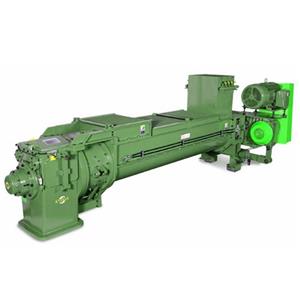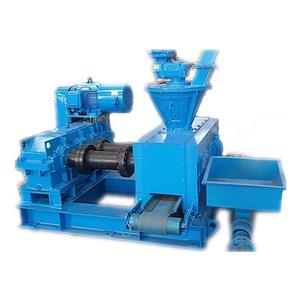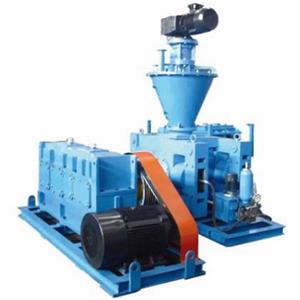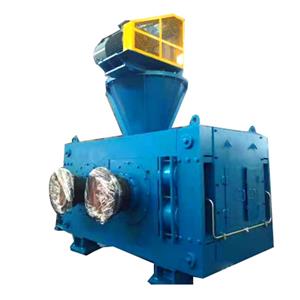-
2807-2023
Analysis of the Characteristics of Bio-Coal Briquettes from Agricultural and Coal Industry Waste (1)
One of the options for reducing harmful emissions in the production of heat energy is the use of biomass, including in combination with industrial waste (for instance, coal and coke dust). Recent studies demonstrate that a mix of biomass and coal makes it possible to obtain a bio-coal briquette with better characteristics, which is a motivating factor in the search for alternative sources of heat energy from local agricultural waste. The aim of this research is to study the properties of bio-coal briquettes from biomass (sunflower husks and leaves) and industrial waste (coal and coke dust).
-
2107-2023
Applications of Sponge Iron and Effects of Organic Carbon Source on Sulfate-Reducing Ammonium Oxidation Process(2)
The results demonstrated that during a start-up period of 90 days, the average ammonium removal efficiency and the sulfate conversion efficiency of the reactor containing the sponge iron were 4.42% and 8.37% higher than those of the reactor without the sponge iron. The addition of the sponge iron shortens the start-up time of this greenhouse gas-free denitrification process and reduces future costs in practical applications. The removal of total nitrogen (TN) significantly increased after adding organic carbon sources and then declined sharply, while the most considerable reduction of ammonium removal efficiency from 98.4% to 30.5% was observed with adding phenol.
-
1407-2023
Applications of Sponge Iron and Effects of Organic Carbon Source on Sulfate-Reducing Ammonium Oxidation Process(1)
The typical characteristics of wastewater produced from seafood, chemical, textile, and paper industries are that it contains ammonia, sulfate, and a certain amount of chemical oxygen demand (COD). The sulfate-reducing ammonium oxidation process is a biochemical reaction that allows both ammonia and sulfate removal, but its low growth rate and harsh reaction conditions limit its practical application. Due to the adsorption properties of the iron sponge and its robust structure, it provides a suitable living environment for microorganisms.
-
0707-2023
Rotor-Stator Mixers: From Batch to Continuous Mode of Operation—A Review (3)
Section 6 discussed what this implies when comparing emulsification efficiencies between the two modes of operation. Several different theories have been suggested, but there is of yet no clear consensus in the literature for how continuous mode RSMs should be operated in order to give the same emulsion as in a batch RSM.
-
3006-2023
Rotor-Stator Mixers: From Batch to Continuous Mode of Operation—A Review (2)
This review summarizes and critically compares the current understanding of differences between these two operating modes, focusing on shaft power draw, pumping power, efficiency in producing a narrow region of high intensity turbulence, and implications for product quality differences when transitioning from batch to continuous rotor-stator mixers.
-
1606-2023
Rotor-Stator Mixers: From Batch to Continuous Mode of Operation—A Review (1)
Although continuous production processes are often desired, many processing industries still work in batch mode due to technical limitations. Transitioning to continuous production requires an in-depth understanding of how each unit operation is affected by the shift. This contribution reviews the scientific understanding of similarities and differences between emulsification in turbulent rotor-stator mixers (also known as high-speed mixers) operated in batch and continuous mode.
-
0906-2023
The Behavior of Direct Reduced Iron in the Electric Arc Furnace Hotspot (2)
Four cases were compared: carbon-free and carbon-containing DRI from DR-grade pellets as well as fines from a fluidized bed reactor were melted batch-wise. A slag layer’s influence was investigated using DRI from the BF-grade pellets and the continuous addition of slag-forming oxides. While carbon-free materials show a porous structure with gangue entrapments, the carburized DRI forms a dense regulus with the oxides collected on top. The test with slag-forming oxides demonstrates the mixing effect of the arc’s electromagnetic forces. The cross-section shows a steel melt framed by a slag layer. These experiments match the past work in that carburized DRI is preferable, and material feed to the hotspot is critical for the EAF operation.
-
0206-2023
The Behavior of Direct Reduced Iron in the Electric Arc Furnace Hotspot (1)
Hydrogen-based direct reduction is a promising technology for CO2 lean steelmaking. The electric arc furnace is the most relevant aggregate for processing direct reduced iron (DRI). As DRI is usually added into the arc, the behavior in this area is of great interest. A laboratory-scale hydrogen plasma smelting reduction (HPSR) reactor was used to analyze that under inert conditions.
-
2605-2023
Mixing Performance Prediction of Detergent Mixing Process Based on the Discrete Element Method and Machine Learning (2)
After validating it with experimental test, this model was utilized to study the mixing performance considering the allowable mass fraction range of every formulation component and a mixer speed of 45 rpm, and the dataset generated from this study was employed along with a machine learning algorithm to obtain a model to predict the mixing index. In this sense, twenty-five different combinations of the defined components were simulated and a mixing index of 0.98–0.99 was obtained in a time of 60 s, revealing that all the combinations were completely mixed. In addition, the developed model was validated with results obtained from the DEM model. The model predicts the mixing index in advance and with accuracy.
-
1905-2023
Mixing Performance Prediction of Detergent Mixing Process Based on the Discrete Element Method and Machine Learning (1)
The DIY approach promotes small-scale digital manufacturing for the production of customized, fast moving consumer goods, including powder detergent. In this context, a machine was developed to manufacture a customized detergent according to the needs of the clients indicated on a digital platform connected to the machine. The detergent is produced by a mixing process of the formulation components carried out in a 3D mixer. Analysing the mixing performance of the process is essential to obtain a quality product. In this study, the mixing process of the powder detergent was modelled using the discrete element method.




